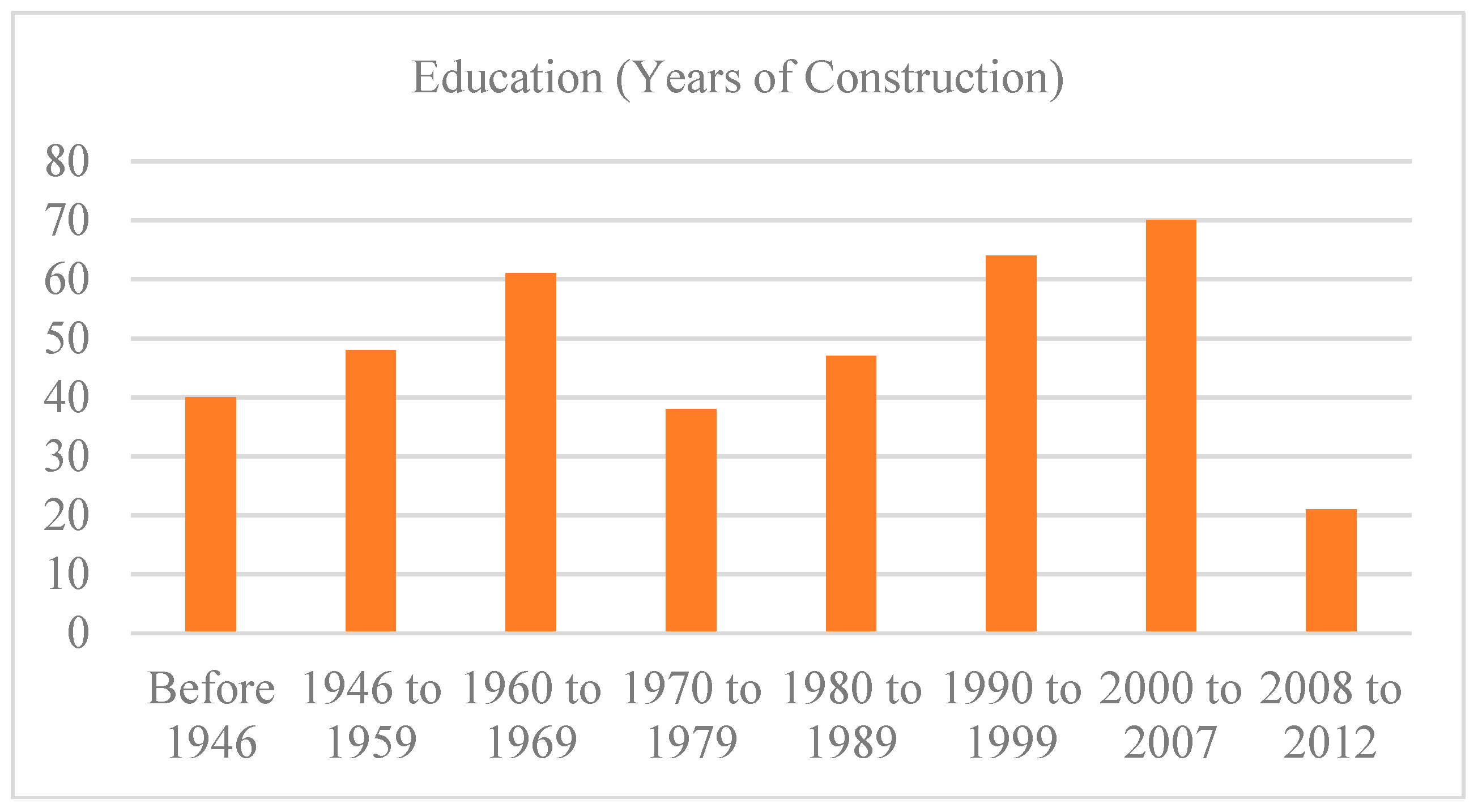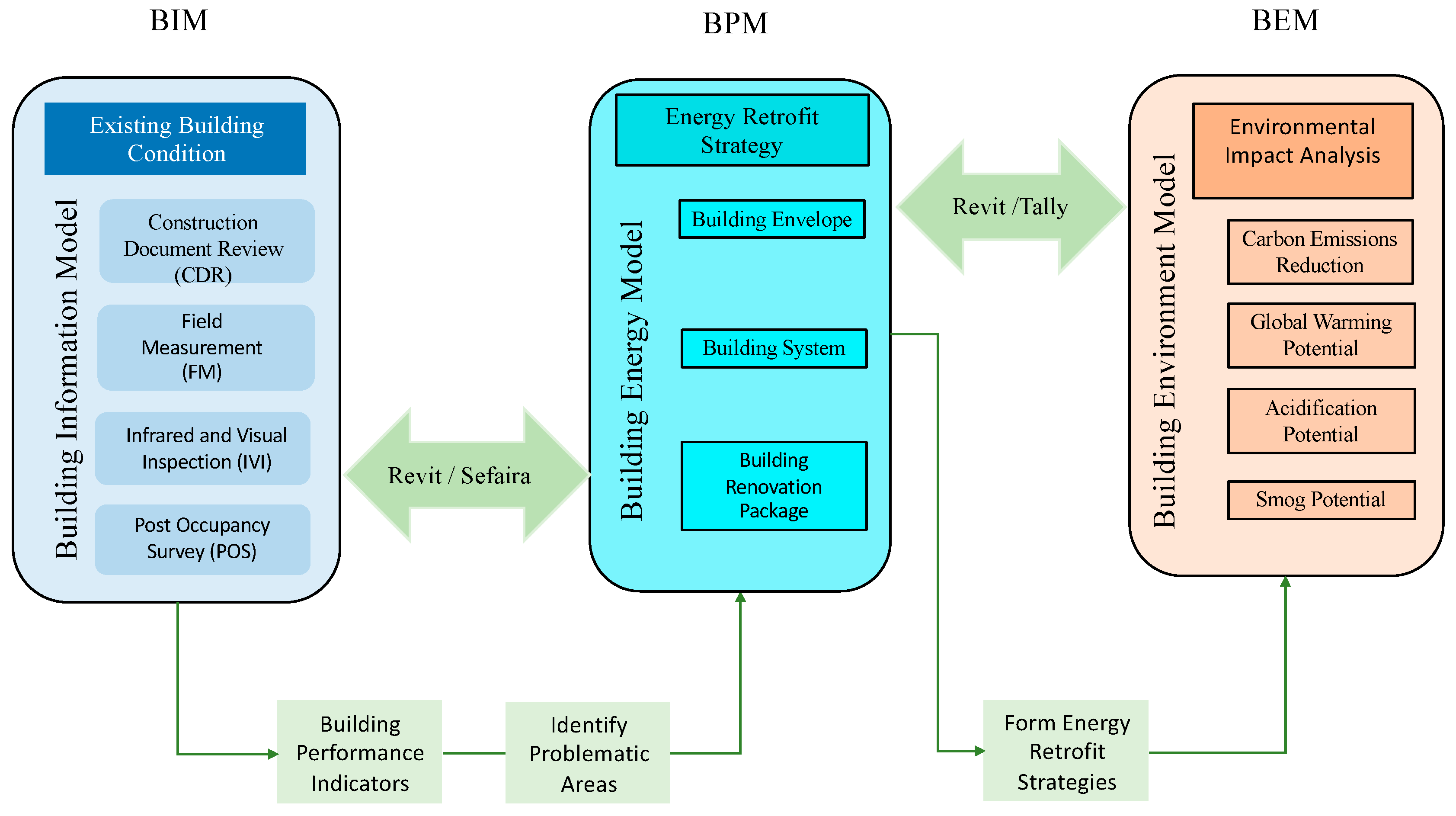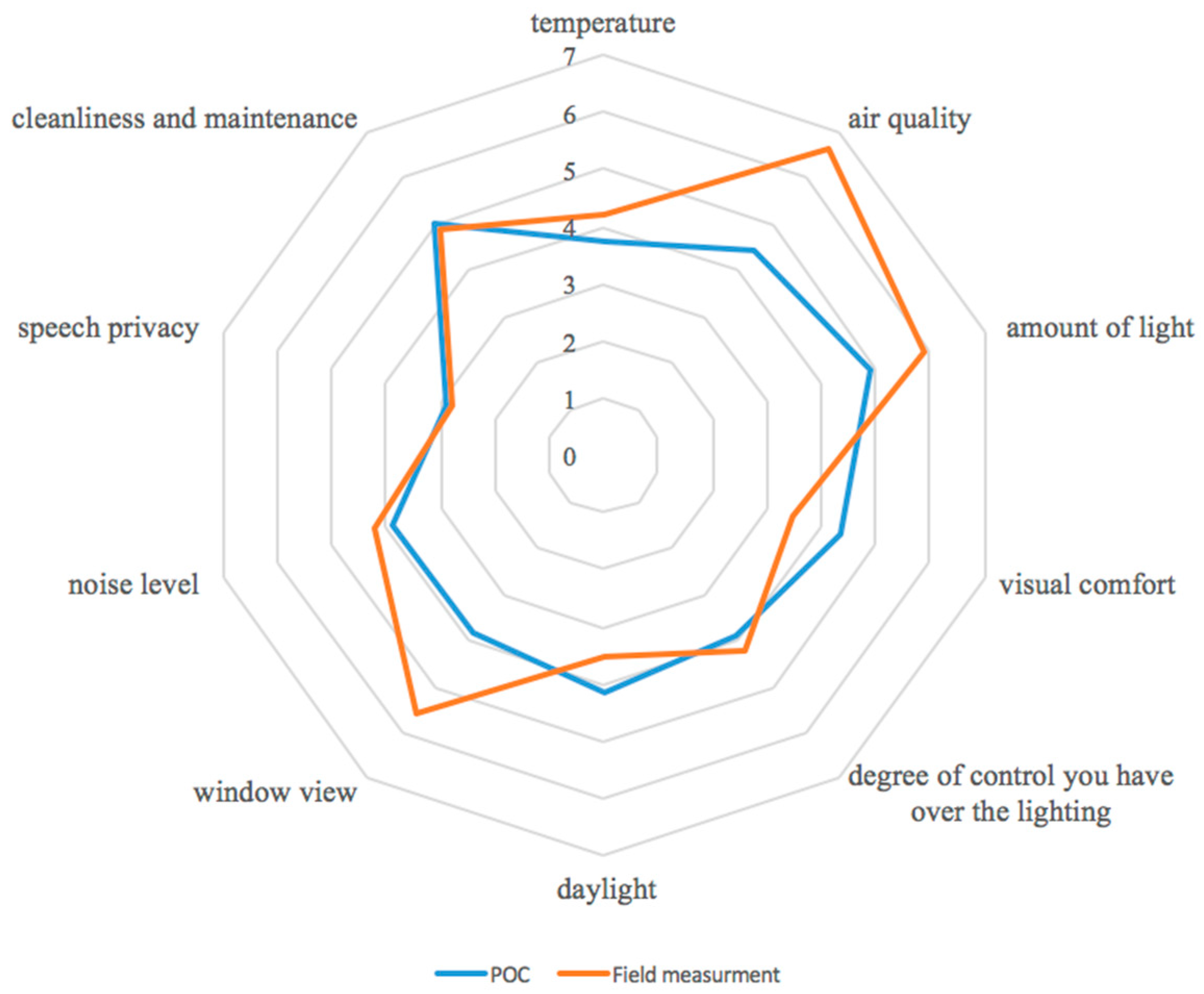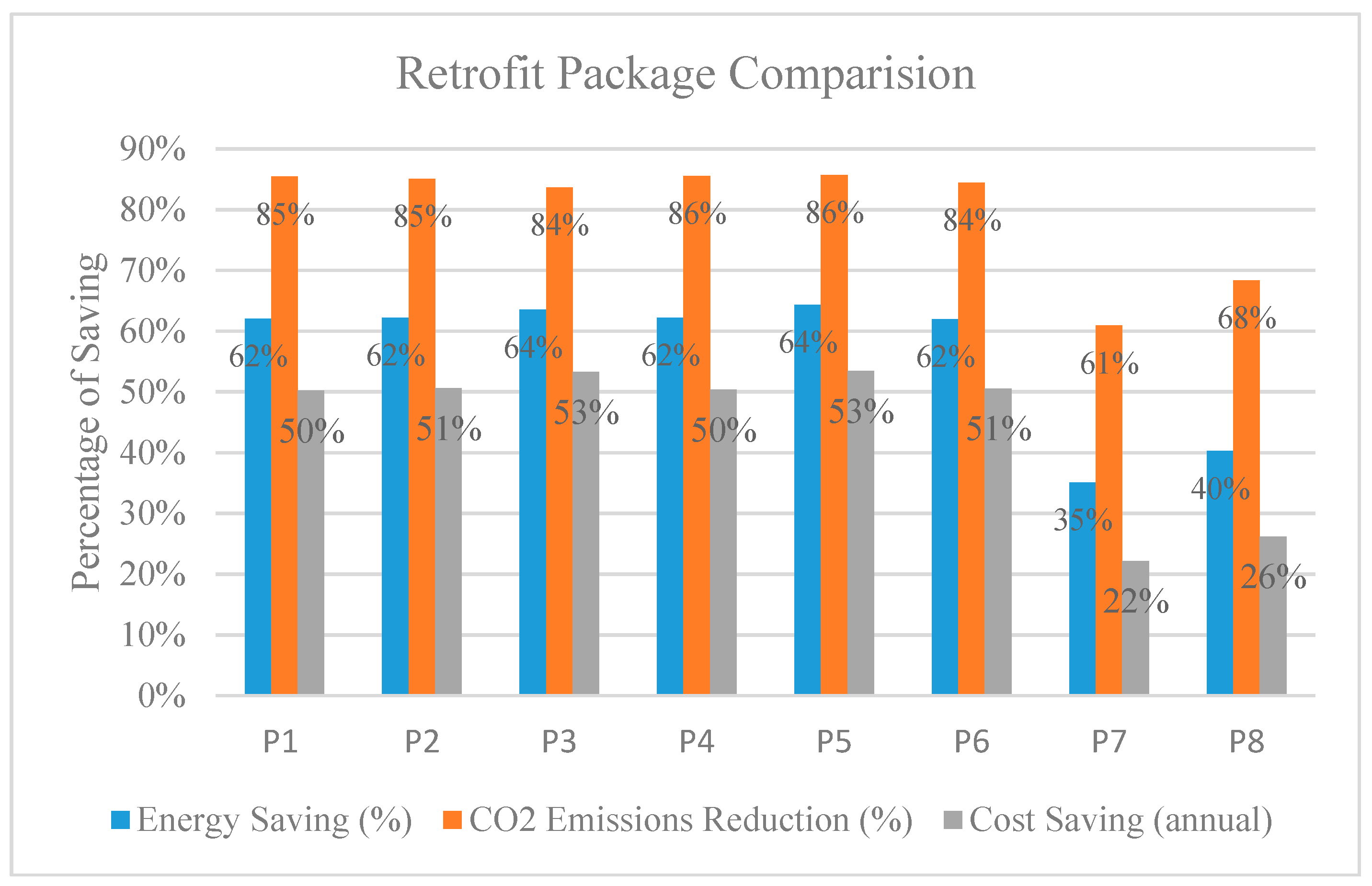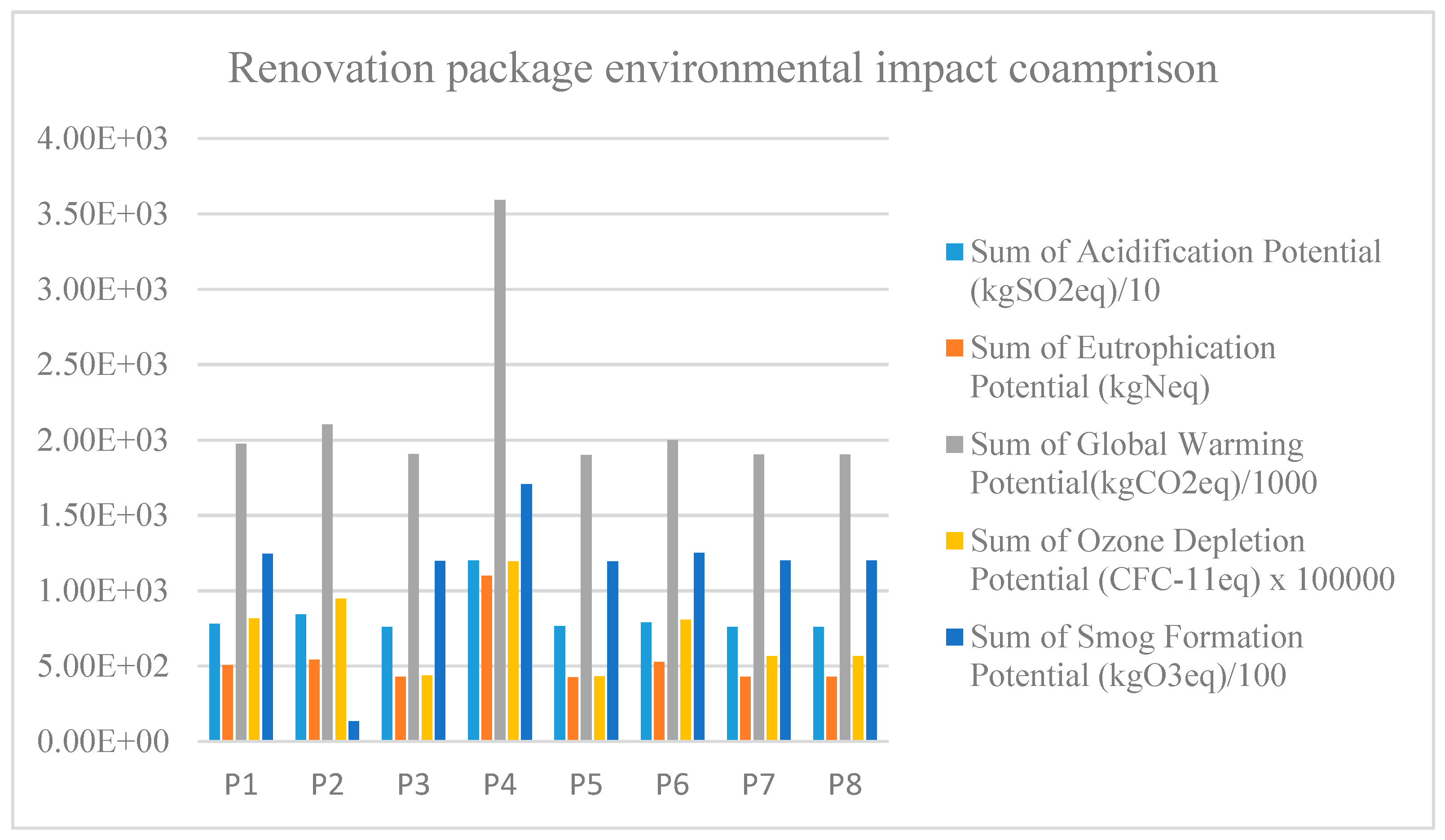3. Methodological Approach and Process
The research methodology was based on the proposed BIM–BEP–BEM framework. As mentioned earlier, BIM stands for the building information model, BPM represents the building performance model, and BEM is the building environment model (refer to
Figure 5).
The building information model (BIM) is a process involving the generation and management of digital representations of physical and functional characteristics of buildings. BIMs are files that can be extracted, exchanged, or networked to support decision-making regarding a building or other built asset [
30]. BIM also introduces the opportunity to try out solutions in advance before building the structure on site: with a constructible model, the design solutions can be prototyped virtually [
31,
32]. BIM has been recognized as a suitable method for support planning, collaboration, and the design of new or existing buildings [
33]. More practice-oriented publications often advocate the benefits of BIM as a maximization of efficiency and reduction in time effort [
34]. BIM is also understood as a digital platform that enables interoperability and data exchange [
35]. Oftentimes, BPM is described as a building energy model that focuses on energy performance. The process of expanding BIM into a building energy model has been extensively studied in the past several years with much success [
36,
37,
38]. A building’s environmental impact is generated through the entire building life cycle, from raw material extraction, construction, and operation to demolition. There are different approaches to quantify a building’s impact, and life cycle assessment is one of the most commonly used and agreed-upon methods. There are a variety of tools that can be employed during the design and planning stage, such as Talley and the Athena Impact Estimator for buildings. However, the links between BIM, building energy performance, and environmental impact have not been fully established. Very recently, Barreca et al. [
39] studied how to improve building information modeling by applying advanced 3D survey techniques, such as a 3D point cloud laser scanner and infrared thermos-graphic camera. Wong and Zhou [
40] pointed out the limited research efforts regarding the management of environmental performance at the building renovation stage and the lack of a comprehensive BIM-based environmental sustainability simulation tool. Chong et al. [
41] outlined the need for improved interoperability among BIM software and energy simulation tools, especially in renovation and refurbishment projects.
In this research project, based on original construction documents and on-site measurement, firstly, a virtual BIM model was constructed; the software chosen for this project was Autodesk Revit. Autodesk Revit is a BIM software developed by Autodesk; it also has 4D capability to track various building life cycle stages. Then, information and data from the BIM model were transferred to a building performance simulation program called Sefaira. Sefaira is a cloud-based software that simulates building energy performance and visualizes the daylight quality in spaces. Additionally, it has a plug-in tool in Autodesk Revit that can translate building information and data—such as the location, area, building system, materials, geometry, window configuration, and functional use—to an online platform. Alternative design options or a renovation package can be set up in the cloud and outputs—such as energy reduction, carbon emissions reduction, and cost—can be compared.
Sefaira uses EnergyPlus as the primary simulation engine. EnergyPlus was developed by the U.S. Department of Energy (DOE) as an open-source whole-building energy modeling engine [
42]. EnergyPlus was built on the strength of both BLAST and DOE-w and includes simulation capacities such as heat balance load calculations; integrated loads, system and plant calculations in the same time step; and a user-configurable HVAC system description [
43]. Sefaira’s interface was developed with support from DOE to allow modelers to model heating, ventilation, cooling, lighting, water use, renewable energy generation, and other building energy flows using sub-hourly time-steps, modular systems, and plant integrated with heat balance-based zone simulation [
44]. Furthermore, it allows the modeler to simulate thermal comfort and customize the operation schedule.
Figure 6 illustrates the dashboard of an energy model for a case building on the Sefaira website.
Sefaira also accounts for occupant behavior in regression forms. For instance, the modeler can create and define different energy model profiles based on the set temperature (user preference) and operational schedule. In this research project, multiple BPM models were created in the cloud and the results compared, which are explained in the following sections. Finally, the material and building system information was extracted from the BIM model and translated into a BEM model. The software used for data transfer and to run an environmental impact analysis is Tally. Tally is the first software that has a direct plug-in in Autodesk Revit that allows the modeler and designers to run a whole building life cycle assessment of the environmental impact from different design solutions. The output from the environmental analysis includes acidification potential, eutrophication potential, global warming potential, ozone depletion potential, and smog formation potential. The following sections present different parts of the methodology applied in this case project.
3.1. Building Information Model (BIM)
The BIM stage in this research comprises four components: the construction document review (CDR), field measurement (FM), infrared and visual inspection (IVI), post-occupancy survey (POS), and BIM model building. There are three primary purposes of the BIM stage: (1) to generate an overall assessment of the existing building’s (UMD’s Architecture Building) conditions; (2) identify problematic areas and potential improvement opportunities according to alignments and discrepancies within CDR, FM, IVI, and POS; (3) and set up a BIM model based on information from IVI, POS, FM, and CDR and then prepare for data extraction to the BPM and BEM models.
3.1.1. Construction Document Review (CDR)
Exterior Envelope of the Architecture Building
The original exterior wall is composed of composite brick veneer with two tiers of CMU (concrete masonry unit) backup and no insulation or air space in between (with an overall dimension of 305 mm (12 inches), which provides a very limited R-value for the exterior walls, estimated at 10.8 W/m
2 K (1.90 Btu/h·ft
2·°F). The existing wall construction does not meet the current code requirement: an R-value of 13 for the exterior wall [
45]. The exterior brick units are in fairly good condition; there are only a few areas in which minor damage to the mortar can be seen. The original roof is made of concrete with 1-inch insulation board and composition roofing over it (refer to
Figure 7). Based on the original construction of the roofing system, the estimated R-value is 28.3 W/m
2 K (5.0 Btu/h·ft
2·°F). There were no recordings indicating that the original roof had been replaced, and the composition roofing only has a warranty of 20 years. However, we cannot assume that the roofing has not been replaced sometime between 1972 and 2018. The current campus-wide standard for roof insulation is R-30 (ASHRAE 2016). The existing windows are the original units composed of single-pane uninsulated glass with painted steel frames. Most current windows units are not operable, with a U-value of approximately 7.3 W/m
2 K (1.29 Btu/h·ft
2·°F). The windows account for around 40% of the total vertical surface area. The existing doors generally have hollow metal frames. The current R-value of the window and door units also does not meet current energy efficiency standards. In general, the existing building exterior requires complete to moderate repair and maintenance, considering the age of the building. The primary problem is that the existing building envelope standard falls quite below the current building energy code requirements. However, with the appropriate retrofit, there is large potential for energy reduction with minimal costs.
Architecture Building System
The heating for the building is supplied by satellite central utility plants: hot water is pumped into the building, and the centralized climate control system in the building controls the indoor temperature in the winter by supplying the hot water. In the basement, there are seven air handling units that supply cool air to 16 different zones within the building. The annual energy consumption between 2015 and 2017 was, on average, 148 kWh/m2 (47.13 kBtu/ft2). The general lighting is composed of fluorescent lamps and some LED lighting in one computer room. There is no ventilation system; air renewal is executed through the opening of windows and doors and natural infiltration. The existing building, in general, has sufficient daylight due the large skylights on the roof and large exterior windows.
3.1.2. Infrared and Visual Inspection (IVI)
An infrared thermograph camera, FLIR One, was used to identify the major thermal bridge, heat loss, and air infiltration in the Architecture Building’s envelopes (walls, roofs). The infrared inspection around the windows’ frame indicated the potential for air leakage and infiltration. Outdoor images revealed a maximum of an 8 °C (46 °F) difference between different sides of buildings, which could be caused by insufficient insulation. Indoor images clearly illustrated that the thermal leaking happened primarily where the ceilings and walls connected [
3] (refer to
Figure 8).
3.1.3. Field measurement (FM)—Indoor Environmental Quality
One of the major obstacles to an affordable energy retrofit is the fact that most older, existing buildings are not metered, making it difficult to identify which categories could gain the most from an energy retrofit. Under such conditions, different renovation strategy indicators, other than energy consumption, could be beneficial for the design team to identify problematic areas. In this study, the combination of a field auditing index and post-occupancy satisfaction index were used as building performance indicators. The energy retrofit packages not only measured an energy consumption reduction but also the users’ preferences. Since summer 2017, four filed measurements have been conducted to measure every room in the Architecture Building: 6 July and 4 September 2017 and 23 January and 4 June 2018. The temperature, humidity, CO
2 levels, acoustic levels, and lighting levels were recorded. The five sets of data were normalized;
Section 4.1 illustrates the results of the datasets. Overall, thermal comfort and acoustic level (speech privacy) were the top two problematic areas based on field auditing. The equipment used for this project included the Supco IAQ55 indoor air quality/temperature/humidity CO
2 tester, Graniger light meter, and RISEPRO digital sound level meter.
3.1.4. Post-Occupancy Survey (POS)
In order to further understand the overall space quality and problematic areas in the existing building, as well as common dissatisfaction points of the indoor environmental quality, a post-occupancy survey, the Indoor Environmental Quality Survey, was conducted online between September 2017 and March 2018. The online survey was sent out to all UMD School of Architecture students, faculty, and staff. A total of 85 responses were received, equaling a total response rate of approximately 24%, which is consistent with the response rates of 10% to 50% for online surveys. The only personal information asked for was the participants’ age. Among those who responded, 40% were between the ages 16–22, 37.1% were between 23–36, and 8.6% were 56 and above (refer to
Table 1).
The survey comprised thirteen questions based on the users’ time spent in the Architecture Building during February 2018. Eleven of these questions asked the participants to rank their satisfaction level for light, noise, temperature, and acoustics, from very dissatisfied (1) to very satisfied (7), seen below in
Table 2. The analysis was done based on these numerical responses, and it omitted the two questions that did not ask for any rankings.
3.1.5. BIM Model Building and Identification of Problematic Areas
The BIM model was constructed based on original construction documents from the Architecture Building’s library as well as documents recording different versions of renovations from the facility management archive library; the research team also conducted field measurements to verify critical dimensions and several unidentified areas that were not indicated in the architectural drawings. The author constructed a three-dimensional virtual model (refer to
Figure 9) using Autodesk Revit and manually input all related material properties that were not part of the default Revit template [
46]. All information related to physical characters and conditions of the existing buildings were embedded in the three-dimensional objects. The Revit model was then prepared and set up to simulate the energy performance of different renovation techniques and packages, which are explained in the next BPM stage in the following
Section 3.2.
From the results of FM, POS, IVI, and CDR, two primary problematics areas were identified (a detailed explanation is included in
Section 4, findings): sound transmission and overheating. These two problematic areas were then used as a guiding principle, together with the energy reduction goal, to evaluate the effectiveness of varied renovation strategies.
3.2. Building Performance Model (BPM)
In this research project, there was limited control regarding the building’s embodied energy since a large portion of it was already spent in the initial construction of the existing building. Accordingly, the author focused on the existing and future operational energy performance of the building. The BPM is composed of three steps: (1) identify and simulate building envelope retrofit techniques; (2) identify and simulate building system retrofit techniques; and (3) identify and simulate the building retrofit package based on results from 1 and 2. The metric used to measure and compare the techniques and packages were total energy reduction (%), total CO2 emissions reduction related to energy (%), cost saving per year (%), initial construction cost (low to high), and construction feasibility (low to high). The primary purposes during the BPM stage were to create a ranking of the proposed renovation packages from energy-saving and cost-optimized perspectives. The Sefaira system was used to carry out the simulation. The construction and maintenance cost information was provided by the Facility Management Office of the University of Maryland.
3.2.1. Energy retrofit Techniques—Envelope and Lighting System
To tackle the two primary problematic areas, a focus on retrofit techniques resulted in exterior envelope upgrades and an interior partition retrofit. In the existing building, the exterior wall and partition walls were either made of CMU block or cast-in-place concrete without thermal and acoustic insulation. Renovation techniques identified for the building envelope and lighting system were:
- (1)
T1: Substitution of present window with low-emissive units (with U-value of 0.25 w/m2 k)
- (2)
T2: Application of additional thermal insulation to the roof slab (R-50)
- (3)
T3: Application of additional thermal insulation for the exterior walls (add additional 3-inch panels of expanded polystyrene insulation, R-38)
- (4)
T4: Application of additional thermal insulation and acoustic insulation for the interior walls (add additional 2-inch panels of expanded polystyrene insulation, R-10)
- (5)
T5: Replace all existing windows with double glazing window units
- (6)
T6: Reduce air infiltration by using air-tight windows (air infiltration rate, 0.3 L/s·m2, 0.06 cfm/ft2)
- (7)
T7: Replace all existing lights with LED lighting
- (8)
T8: Application of phase-change material (PCM) wall board on the inside face of exterior wall
Based on the available records, there were no major upgrades/renovations done to the building envelope; therefore, improving the exterior wall and roof insulation were considered first as well as enhancing the window energy performance. Roof insulation can be increased to R-50 by adding additional panels of expanded polystyrene [
3] (10-inch thickness). The overall achievable annual saving is around 250,671 kWh, and it implies avoided CO
2 equivalent emissions of about 22%, compared to the existing building. The cost of this renovation technique, including demolition and roof surface repair, is around
$33,230 to
$64,839, based on a unit cost of
$10.25/ft
2 to
$20/ft
2 [
47]. In the first year of installation, a saving can be realized. The existing building has a minimal R-value for the exterior wall; adding additional insulation board on the inner face of the exterior wall could increase the R-value to R-38. The retrofit of the exterior wall alone could produce an energy saving of approximately 290,635 kWh and a CO
2 emissions reduction of roughly 21%. Insulation could also be applied to the surface of the interior wall with insulating plaster, which could provide acoustic insulation. With 2-inch thermal plaster, it potentially adds an additional R-10 insulation, which represents a considerable reduction of heat transmittance through the rooms and prevents sound transmission. Meanwhile, thermal insulation also provides extra sound protection. For instance, acoustic batts insulation and other composite materials can absorb the sound transmission through vibrations within the wall cavity [
48,
49]. The total energy saving is around 3%, with the CO
2 emissions reduction around 8%. Another practical envelope retrofit technique includes replacing the existing glass with low emissivity (Low-E) glazing or replacing all single-pane glass with double-pane glass. The latter results in a 19% CO
2 emissions reduction and 11% energy consumption reduction.
Most buildings on campus were built in the late 1960s and early 1970s, and the air infiltration rate varied from 3.0 × 10
−4 to 3.0 × 10
−4 m
3/s·m
2 (pa)
0.65 (2.1 to 4.9 cfm/ft
2 (inches of water). Additionally, 15% to 45% of the overall air leakage could be attributed to flow through the intake and exhaust system openings [
50,
51,
52]. Based on ANSI/ASHRAE standard 62.1-2016, the minimal requirement for an office space and auditorium seating area is 0.06 cfm/ft
2 and 0.12 cfm/ft
2 for a library [
46]. A reduction in air infiltration through the façade presents the most obvious gain in heat-related energy consumption, with a reduction of approximately 27%. As heating accounts for 44% of the overall energy consumption, reducing the air infiltration by tightening the building envelope may be the most efficient energy-saving technique, equivalent to a saving of
$29,643. However, other impacts of this solution should be further studied such as indoor air quality.
Two other techniques that were compared include replacing existing T4 and T8 lighting fixtures with LED lights and adding phase-change materials in the exterior wall. Lighting accounts for 9% of the overall energy consumption; installing LED lights could save approximately 282,375 kWh, 12% compared to the baseline. Additionally, phase-change materials (PCM) could be added into the wallboard to increase insulation [
53]. Below,
Figure 9 and
Table 3 presents a comparison of different techniques. Overall, T6 and T8 generate the largest energy consumption reduction and CO
2 emissions reduction, with T4 following as the third most effective technique.
In terms of cost, T6 is the most cost-effective (saving) in comparison to other techniques, with T8 following in second (refer to
Table 3). T2 and T7 are the most effective in reducing the peak heating and cooling loads (refer to
Figure 10). In terms of the initial construction cost, T6 has the lowest cost while T5 has the highest cost; T8 is difficult to predict due to the lack of enough data, and the remaining techniques share similar per-unit costs. When observing the construction feasibility, T7 represents the most practical strategy whereas T8 is the least feasible, due to the accessibility of phase-change materials (refer to
Table 3).
3.2.2. Energy Retrofit Techniques—Building System
Renovation techniques identified for the building system included the following:
- (1)
HVAC1: VAV with rooftop package unit
- (2)
HVAC 2: VAV with central plant
- (3)
HVAC 3: DOAS System (Package Terminal AC)
- (4)
HVAC 4: DOAS System (Split System)
- (5)
HVAC 5: DOAS System (Fan Coil Units and Central Plant)
- (6)
HVAC 6: DOAS System (Water Source Heat Pump Fan Coils)
- (7)
HVAC 7: DOAS System (Active Chill Beams)
- (8)
HVAC 8: DOAS System (Passive Chill Beams)
Table 4 below presents a comparison of the different techniques. Compared to a conventional variable air volume VAV system, a dedicated outdoor air system (DOAS) can provide better ventilation and humidity control, thus creating enhanced indoor air quality. However, because the DOAS system requires a separate system for outside air, the VAV system is more cost-effective and offers lower maintenance requirements. Among the eight different options, HVAC 1 and 2 produce the highest energy-saving and CO
2 emissions reduction potential, with a relatively low cost (refer to
Table 4).
3.2.3. Retrofit Strategy Package Setup
Based on the results from the building envelope and building system retrofit techniques, six different packages were proposed according to their energy-saving potential, carbon emissions reduction potential, construction feasibility, and initial cost (refer to
Table 5). A simulated final site energy use intensity was also provided.
3.3. Building Environment Model (BEM)
In stage three, different retrofit packages were investigated and compared to further understand their environmental impact. Life-cycle assessment (LCA) is a process whereby the material and energy flows of a system are quantified and evaluated. Given the complexities of the interactions between the built and natural environments, LCA represents a comprehensive approach to examining the environmental impacts of an entire building [
46]. The five environmental impact indicators selected for this study were global warming potential, ozone depletion potential, acidification potential, eutrophication potential, and smog formation potential. The LCA conducted in this project is based on ISO standards for life cycle assessment 14040 (principles and framework) and ISO 14044 (requirements and guidelines) in accordance with EPA, SETAC guidelines [
54,
55].
The tool used for analysis was Tally. Tally is the only application to conduct a lifecycle assessment that is fully integrated in the Autodesk Revit model. It analyzes environmental impact during the whole building life cycle, from raw material extraction to demolition. Tally uses the GabB Life Cycle Inventory (LCI) database, which is one of the leading databases used by life cycle analysis practitioners [
56,
57]. First, the renovation packages were constructed in Revit as design options. The model created in BIM included all necessary data of building assemblies and systems, such as windows, doors, walls, columns and floors, and the HVAC system, among others. Afterward, the materials and constructed data were translated from the Revit model through Tally to be mapped with LCI data. The plug-in tool Tally allows researchers to map BIM objects with the GaBi LCI database to run an analysis of the environmental impact of different renovation packages. Detailed results and an explanation are presented in
Section 4 below.
5. Conclusions
This paper presented a novel BIM–BPM–BEM framework tailored toward education building renovation. It aimed to select suitable renovation strategies that take into account all performance indicators: an energy consumption reduction, CO2 emissions reduction, environmental impact reduction, and indoor quality improvement. A variety of renovation techniques were identified, and multiple retrofit packages were compiled with four primary goals: (1) to optimize the energy demand reduction to contribute to UMD’s overall carbon neutrality goal; (2) improve speech privacy by adding additional acoustic insulation; (3) improve thermal comfort by mitigating overheating problems, and; (4) minimize the long-term environmental impact. Firstly, the data derived from field measurements was cross-referenced with a post-occupancy survey and infrared thermography scan to create an accurate building profile and BIM model. Then, the BIM model was clearly defined in order to be translated to the BPM stage, where it simulated the energy performance of different renovation packages. The environmental impacts of eight proposed renovation packages were then compared in the BEM stage. Finally, the BPM and BEM results and cost indicators were analyzed together to determine the optimal renovation solution for the existing building. The data used for the environmental impact analysis and energy simulation was derived directly from the BIM model to ensure the data interoperability.
This research fills the current gap between energy efficiency improvement and environmental impact mitigation. The results from the BPM and BEM analyses revealed that the energy and cost-saving benefits do not always align with the environmental impact reduction potential. For instance, renovation packages 2 and 4 produced high cost savings as well as energy and CO2 reductions; however, they also produced the largest environmental impact potential in all five indicators studied. Awareness of the asymmetrical benefits between energy saving and environmental impact could encourage design teams and decision-makers to examine balanced solutions for building renovations. Energy, indoor environmental quality, and long-term environmental impacts should be integrated and used together in a building performance evaluation matrix. To this extend, package 3 presents the optimal solution, considering all performance indicators.
The proposed framework could potentially be applied to large-scale projects, such as campus district renovation or neighborhood renovation. Studying the energy consumption reduction on a large scale is a relatively new focus area: the first published study on energy retrofit on the district level was found in 2008 by [
58]. Since then, several large-scale studies have been published, such as Moscow’s residential district renovation impact on energy and emissions [
59]. Easy-to-use evaluation and analysis frameworks and tools help to promote the adoption of large-scale energy renovation planning and implementation.
Another important insight resulting from this study was the importance of interoperability among different software in facilitating data translation and transformation. Advanced digital technologies and platforms—such as BIM (Autodesk Revit), BPM (Sefaira), and BEM (Tally)—make it possible for decision-makers to examine all performance indicators within the same framework and form decisions with a holistic understanding of all the advantages and disadvantages of the proposed renovation strategies.


